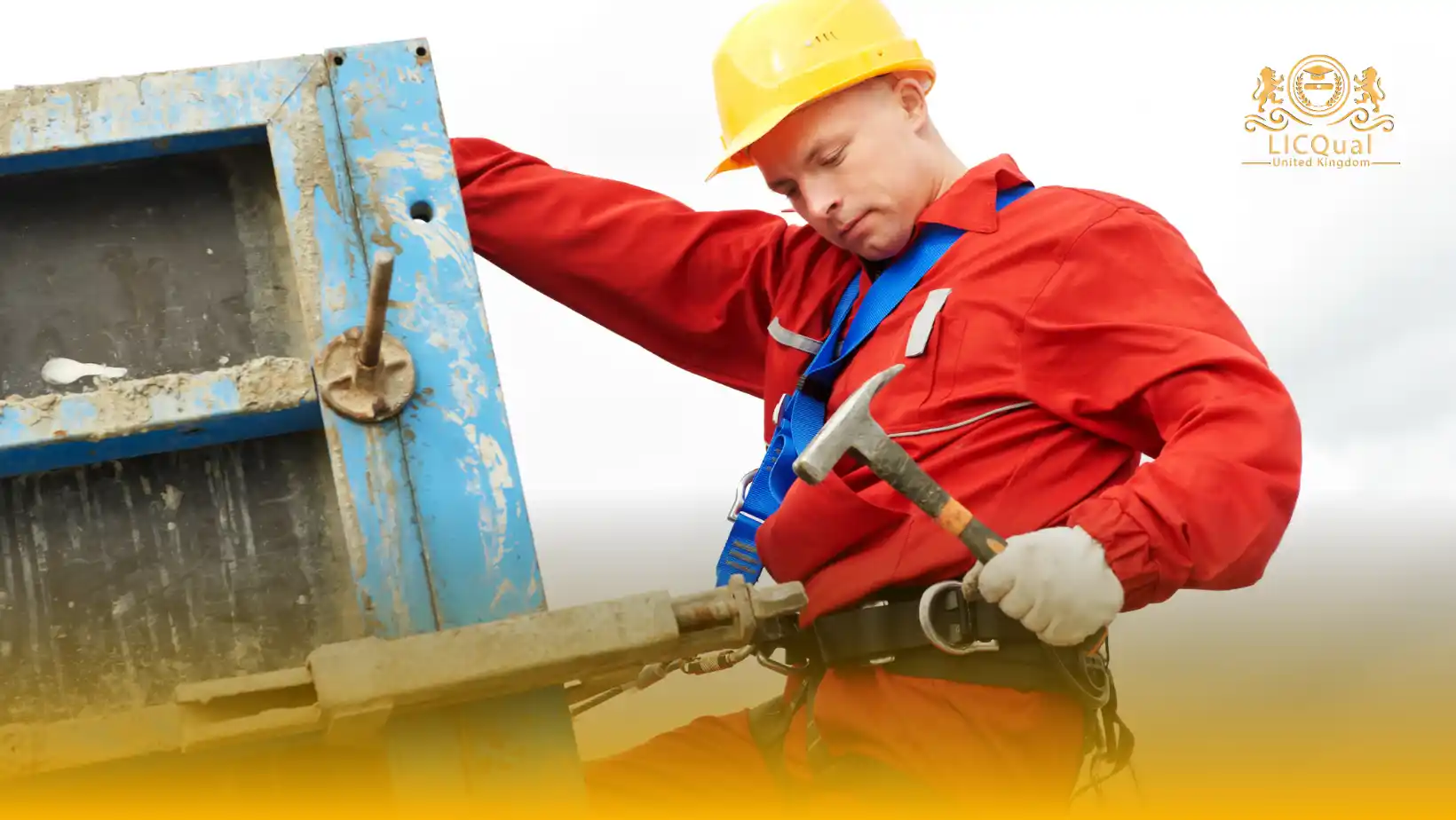The LICQual Level 2 Certificate in Rigger is a comprehensive training program designed for individuals who want to build on their foundational rigging knowledge and take their skills to the next level. Ideal for those already working in rigging or related fields, this qualification will equip you with the technical expertise needed to perform more complex rigging operations with confidence.
Whether you are looking to enhance your current role or progress into more advanced positions, the LICQual Level 2 Certificate in Rigger offers the perfect pathway to gaining industry-recognized qualifications.
This course provides practical, hands-on training in key rigging areas such as equipment inspection, load calculations, lifting techniques, and safety protocols. You’ll gain in-depth knowledge of the essential tools and equipment used in rigging, as well as how to plan and execute safe rigging operations.
With a focus on real-world applications, the LICQual Level 2 Certificate in Rigger is ideal for individuals aiming to advance their careers in industries like construction, offshore, and manufacturing, where rigging plays a crucial role.
The LICQual Level 2 Certificate in Rigger is a specialized course designed to provide you with a comprehensive understanding of advanced rigging principles and practices. You will learn how to safely plan, carry out, and supervise rigging operations, as well as how to manage the risks associated with lifting heavy loads.
By the end of the course, you will have developed the necessary skills to safely manage rigging operations, making you a valuable asset to any team. With the LICQual Level 2 Certificate in Rigger, you will gain the knowledge and confidence required to take on more complex rigging tasks and progress in your career.
This certification is recognized by industry leaders and will help you stand out in the competitive rigging and lifting industry.
Course Overview
Qualification Title
LICQual Level 2 Certificate in Rigger
Total Units
6
Total Credits
18
GLH
72
Qualification #
LICQ2200190
Qualification Specification
To enroll in the LICQual Level 2 Certificate in Rigger, applicants must meet the following criteria:
|
Qualification# |
Unit Title |
Credits |
GLH |
|---|---|---|---|
|
LICQ2200190-1 |
Introduction to Rigging |
3 |
12 |
|
LICQ2200190-2 |
Rigging Equipment Inspection |
3 |
12 |
|
LICQ2200190-3 |
Rigging Plan and Risk Assessment |
3 |
12 |
|
LICQ2200190-4 |
Lifting Equipment Regulations |
3 |
12 |
|
LICQ2200190-5 |
Communication and Signaling |
3 |
12 |
|
LICQ2200190-6 |
Practical Rigging Techniques |
3 |
12 |
By the end of this course, learners will be able to:
Introduction to Rigging
- Understand the fundamental principles and concepts of rigging.
- Identify different types of rigging tasks and their relevance in various industries.
- Recognize the roles and responsibilities of rigging personnel.
- Explain the basic components involved in rigging operations and their functions.
Rigging Equipment Inspection
- Identify and describe various types of rigging equipment used in lifting operations.
- Demonstrate the ability to inspect rigging equipment for wear, damage, and compliance with safety standards.
- Understand the importance of regular equipment inspections and maintenance to ensure safe operations.
- Recognize the procedures for testing and assessing the functionality of rigging equipment.
Rigging Plan and Risk Assessment
- Understand the process and importance of creating a rigging plan for safe and efficient operations.
- Conduct a comprehensive risk assessment for rigging tasks, identifying potential hazards and mitigating risks.
- Create a rigging plan that includes appropriate rigging methods, equipment selection, and safety measures.
- Understand how to implement control measures to manage identified risks during rigging operations.
Lifting Equipment Regulations
- Understand the key regulations, standards, and legal requirements governing lifting equipment and rigging operations.
- Identify the responsibilities of employers and rigging personnel in ensuring compliance with lifting equipment regulations.
- Demonstrate knowledge of inspection, maintenance, and testing protocols for lifting equipment.
- Apply lifting equipment regulations to ensure safe and compliant rigging practices.
Communication and Signaling
- Recognize the importance of clear communication and signaling during rigging operations.
- Demonstrate proficiency in using standard hand signals and verbal communication for effective coordination.
- Understand the role of communication in ensuring safety and preventing errors during rigging tasks.
- Apply proper signaling techniques in real-time rigging scenarios to ensure safety and operational efficiency.
Practical Rigging Technique
- Apply theoretical rigging knowledge to real-world practical rigging tasks.
- Demonstrate proficiency in using rigging equipment and tools safely during lifting operations.
- Perform basic rigging techniques such as securing loads, balancing, and lifting, while adhering to safety protocols.
- Solve practical rigging challenges and adapt techniques based on specific site conditions and load requirements.
This diploma is ideal for:
Assessment and Verification
All units within this qualification are subject to internal assessment by the approved centre and external verification by LICQual. The qualification follows a criterion-referenced assessment approach, ensuring that learners meet all specified learning outcomes.
To achieve a ‘Pass’ in any unit, learners must provide valid, sufficient, and authentic evidence demonstrating their attainment of all learning outcomes and compliance with the prescribed assessment criteria. The Assessor is responsible for evaluating the evidence and determining whether the learner has successfully met the required standards.
Assessors must maintain a clear and comprehensive audit trail, documenting the basis for their assessment decisions to ensure transparency, consistency, and compliance with quality assurance requirements.

